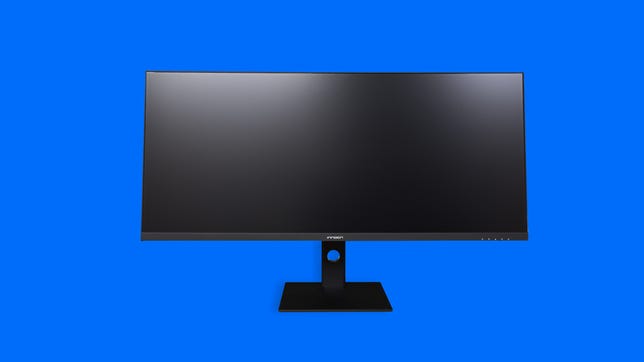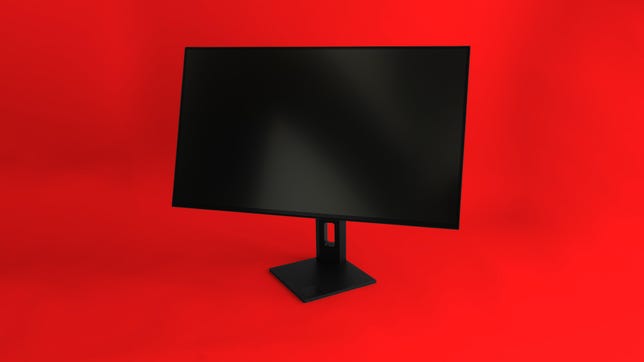Technologies
Best Monitors We’ve Tested in 2023
Dell, HP, Apple and more hit our list of top monitors we’ve tested recently.

Though money’s still tight for a lot of folks, the days of desperately hunting for a $200 monitor for every member of a suddenly working-and-schooling-at-home family are long gone. The good news is that prices seem to be coming down across the board and better technologies — notably OLED and HDR with local dimming thanks to Mini LED backlights — are becoming more widely available for desktop displays.
Now you have time to think about whether that emergency purchase you made a couple of years ago still suits your needs. (Has your isolation-induced interest in gaming or design changed your priorities?) And you’ve got time to budget for that widescreen display you’ve had your eye on.
Read more: How to Buy a Gaming Monitor
Which is the best monitor?
As with many categories of tech products, «best» can be quite subjective regardless of how objective your testing is. For instance, I prioritize color accuracy over thin bezels and sleek curves. So I tend to refer to my top picks as «favorites» (or «top picks») rather than «bests.» And while expensive monitors aren’t necessarily better than cheaper ones, you usually have to spend more or make compromises, especially for more specialized displays for color work or gaming.
With that in mind, my favorite overall monitor from the pool I’ve tested this year is the Alienware 34 QD-OLED. It’s pricey at $1,100, but it has great image quality, excellent color and class-leading gaming performance. It’s also widescreen, which is a perk for work.
A bigger screen but for a lot less is Innocn’s 40-inch 40C1R at $600. It’s not nearly as good, but it’s good enough all around — especially if you can find it when the price dips.
I want you to know that between remote work and a move to new offices, it’s been a slow ramp-up this year for monitor testing and reviews, but you can start expecting a more consistent review schedule and updates to this list.
If you need advice on whether a particular type of monitor is right for you, there are some answers to common questions at the bottom of the list and a lot more guidance available in our general monitor and gaming monitor buying guides.
Alienware
The combination of OLED with Samsung’s Quantum Dot color technology makes this Alienware 34-inch a standout. With great gaming performance and quality, terrific color and tonal accuracy (notably in the dark shadow areas, where OLED is weak), true HDR support, a USB hub, a solid set of controls and an above-average three-year warranty against burn-in, it really is hard to beat. It’s not perfect: It doesn’t have speakers, though the ones built into monitors tend to be pretty lame, and I’m not thrilled with the design of the connector layout and cable management, to mention a couple nitpicks. But it’s certainly a top all-around choice.
In September, Alienware announced a followup model, the AW3423DWF, which will be less expensive at $1,100. As far as I can tell, it’s essentially the same panel, but instead of G-Sync, it supports FreeSync Pro and new VESA Adaptive-Sync, two DP connectors and one HDMI versus the opposite on the older model and 120Hz VRR when hooked up to a console. There might be some other tweaks since it loses the extra overhead of the G-Sync silicon (for instance, it supposedly can mount closer to a wall with a VESA mount). It’s expected to go on sale in the US in early November.
The 40-inch flatscreen Innocn trades some excellence for value, making it a solid general-purpose monitor if you need a big ‘un for less and are OK with above average, but not best-in-class, gaming or color-critical accuracy. Plus, it ships with VESA mounting hardware in the box, which is convenient if you want to mount it on a wall or an arm, and unlike a lot of «value» competitors, it has a USB-C connection with 90-watt power delivery.
Like many big-for-less displays, the Innocn has somewhat low resolution for its size — 3,440×1,440 pixels — but if you normally scale your view, then it should suit. Gaming is solid, but if you play games with really fast moving action, the motion artifacts may bother you. It does handle 144Hz (DP) and 100Hz (HDMI) refresh rates, though. And it has a lot of features that are either minimally effective or undocumented.
Lori Grunin/CNET
One of my pet peeves with the majority of monitors is the location of all the connectors in a hard-to-reach recess. That’s not an issue if you never have to get to the USB ports or swap the video cables. But if you do, then this HP stands out for its diamond-angled back that essentially puts all the connectors on the sides. It’s no slouch as a monitor either. My unit required a little tweaking to hit some better color accuracy, but was quite good afterward. And it’s great for both PC and console gaming, with support for 4K at 144Hz over DisplayPort and 4K/120Hz VRR compatible with consoles. Plus it’s got a USB hub.
Don’t get it if you want real HDR or are swayed by the lure of speakers — the latter are good for boop-and-beep notifications, for example, but can’t replace a real speaker system or headset. And my one peeve about the design is the stand’s inability to swivel.
Dell
Dell’s IPS Black panel in this 32-inch monitor (plus webcam, mic and speakers) delivers the broad color gamut of IPS plus deeper blacks, which means higher contrast than usual. And that translates to easier on the eyes for long days in front of the screen.
The «videoconferencing» refers to a tilting 4K webcam, 12-watt speakers, mic array, on-bezel videoconferencing touch controls and extra work perks like power delivery and monitor daisy chaining, a ton of USB connections for docking and more. If you like your desk to look like it’s a stock photo, it’s a clean solution. And some of the USB ports are even within easy reach. Since most of the features are controlled in software, this isn’t a good choice for Mac users.
It’s expensive, but it does include the equivalent of a webcam, conference phone and hub. So if you need those, it somewhat mitigates the sticker shock. If and when it goes on sale, it will also be a good value.
Dell released firmware that it says addresses at least some of the nitpicks I had when I reviewed it — mostly about the sound and image quality for the mic and camera — but I was unable to go back and retest.
Read our Dell UltraSharp 32 Videoconferencing Monitor (U3223QZ) review.
Apple
Pricey but pretty — with excellent color accuracy and reference profiles plus a good, six-speaker audio system — the Apple Studio Display gives Mac ecosystem fans exactly what one expects from Apple.
That includes some of the downsides as well, such as no physical controls, no HDR, extra cost for a stand that lets you adjust the height (with no swivel or rotation), a single input connection and the three USB-C ports on the back rather than easily accessible.
Other notable monitors
HyperX Armada 27 ($500): HyperX’s first foray into gaming monitors feels a little like a test balloon. Parent company HP already sells an Omen line of gaming monitors, and it seems like a monitor-plus-arm is just an attempt to differentiate. The Armada 27 is a fine 165Hz, 1440p gaming display and the arm comes with parts for multiple types of mounting, but I wasn’t a huge fan of the arm design and there are better 27-inch 1440p monitors for the money.
Sony InZone M9 ($798): This PlayStation-optimized monitor — though its not from Sony’s PlayStation division — is a great HDR experience (DisplayHDR 600 with 96-zone local dimming) and works as advertised with the PS5. If you plan to mount it on an arm or VESA-compatible stand, then bump my opinion up a few notches; over time, I’ve grown to dislike the stand design more and more. Plus, the InZone M9 takes forever to cycle through inputs in auto input select mode on a multimonitor/input system.
Monitor FAQs
What screen size do I need?
Everything being equal, and if you’ve got the space and budget, bigger is almost always better. Screen size labeling is based on the length of the diagonal: That made it easy to compare when almost every screen had the same aspect ratio (the ratio of the number of horizontal pixels to vertical pixels). But wide and ultrawide screens on desktop and newer ratios on laptops (such as 3:2 or 16:10) make it a little more difficult.
If you remember your geometry and algebra, you can calculate the width and height of the display if you also know the aspect ratio (because width/height = aspect ratio and width² + height² = diagonal²). The further from 1:1 the aspect ratio is, the wider the screen and the more the sides will be out of your center of vision if you’re up close. The calculation will also let you figure out the physical dimensions of the screen, most notably the width, to ensure it will fit in the allotted space. DPI Calculator can do the math for you.
Should I get two screens or one ultrawide?
This really depends on what you’re doing. For instance, if you want a really fast gaming monitor for play and a high-resolution display for work, it’s a lot cheaper to get two than a single one that does both. Or if you need a color-accurate monitor for design but want a high-brightness one for gaming, it’s also a lot cheaper to get two smaller ones — I have two 27-inch models for that reason. But if you just need a ton of screen space, a single ultrawide might be simpler.
Need more guidance? We’ve got more detailed info on what to look for in a general-purpose monitor and more specifically what’s important in a gaming monitor.
How we test monitors
All measurements are performed using Portrait Display’s Calman Ultimate 2021 R4 software using a Calibrite ColorChecker Display Plus (formerly X-Rite i1Display Pro Plus) and a Murideo Six-G pattern generator for HDR testing where necessary, or the Client3 HDR patterns within Calman, where possible. How extensive our testing is depends on the capabilities of the monitor, the screen and backlight technology used, and the judgment of the reviewer.
On the most basic models we may stick with just brightness, contrast and color gamut, while on more capable displays we may run tests of most user-selectable modes for gaming or color-critical usage, uniformity and so on. For the color work, we may also run tests to verify how white point accuracy varies with brightness.
Color accuracy results reported in units of Delta E 2000 are based on Calman’s standard Pantone patch set, plus the grayscale and skin tone patches. White points results are based on both the actual white value plus the correlated color temperature for the entire gray scale (21 patches, 0 to 100%) rounded down to the nearest 50K as long as there are no big variations. We also use Blur Busters‘ motion tests to judge motion artifacts (such as ghosting) or refresh rate-related problems that can affect gaming.
The best laptops in every category
- Best Laptop for 2023
- Best Windows Laptops
- Best Laptop for College
- Best Laptop for High School Students
- Best Budget Laptop Under $500
- Best Dell Laptops
- Best 15-Inch Work and Gaming Laptops
- Best 2-in-1 Laptop
- Best HP Laptops
- Best Gaming Laptop
- Best Cheap Gaming Laptop Under $1,000
- Best Chromebook: 8 Chromebooks Starting at Under $300
Technologies
Today’s NYT Mini Crossword Answers for Tuesday, Oct. 14
Here are the answers for The New York Times Mini Crossword for Oct. 14.

Looking for the most recent Mini Crossword answer? Click here for today’s Mini Crossword hints, as well as our daily answers and hints for The New York Times Wordle, Strands, Connections and Connections: Sports Edition puzzles.
Today’s Mini Crossword has an odd vertical shape, with an extra Across clue, and only four Down clues. The clues are not terribly difficult, but one or two could be tricky. Read on if you need the answers. And if you could use some hints and guidance for daily solving, check out our Mini Crossword tips.
If you’re looking for today’s Wordle, Connections, Connections: Sports Edition and Strands answers, you can visit CNET’s NYT puzzle hints page.
Read more: Tips and Tricks for Solving The New York Times Mini Crossword
Let’s get to those Mini Crossword clues and answers.
Mini across clues and answers
1A clue: Smokes, informally
Answer: CIGS
5A clue: «Don’t have ___, man!» (Bart Simpson catchphrase)
Answer: ACOW
6A clue: What the vehicle in «lane one» of this crossword is winning?
Answer: RACE
7A clue: Pitt of Hollywood
Answer: BRAD
8A clue: «Yeah, whatever»
Answer: SURE
9A clue: Rd. crossers
Answer: STS
Mini down clues and answers
1D clue: Things to «load» before a marathon
Answer: CARBS
2D clue: Mythical figure who inspired the idiom «fly too close to the sun»
Answer: ICARUS
3D clue: Zoomer around a small track
Answer: GOCART
4D clue: Neighbors of Norwegians
Answer: SWEDES
Technologies
Watch SpaceX’s Starship Flight Test 11
Technologies
New California Law Wants Companion Chatbots to Tell Kids to Take Breaks
Gov. Gavin Newsom signed the new requirements on AI companions into law on Monday.

AI companion chatbots will have to remind users in California that they’re not human under a new law signed Monday by Gov. Gavin Newsom.
The law, SB 243, also requires companion chatbot companies to maintain protocols for identifying and addressing cases in which users express suicidal ideation or self-harm. For users under 18, chatbots will have to provide a notification at least every three hours that reminds users to take a break and that the bot is not human.
It’s one of several bills Newsom has signed in recent weeks dealing with social media, artificial intelligence and other consumer technology issues. Another bill signed Monday, AB 56, requires warning labels on social media platforms, similar to those required for tobacco products. Last week, Newsom signed measures requiring internet browsers to make it easy for people to tell websites they don’t want them to sell their data and banning loud advertisements on streaming platforms.
AI companion chatbots have drawn particular scrutiny from lawmakers and regulators in recent months. The Federal Trade Commission launched an investigation into several companies in response to complaints by consumer groups and parents that the bots were harming children’s mental health. OpenAI introduced new parental controls and other guardrails in its popular ChatGPT platform after the company was sued by parents who allege ChatGPT contributed to their teen son’s suicide.
«We’ve seen some truly horrific and tragic examples of young people harmed by unregulated tech, and we won’t stand by while companies continue without necessary limits and accountability,» Newsom said in a statement.
Don’t miss any of our unbiased tech content and lab-based reviews. Add CNET as a preferred Google source.
One AI companion developer, Replika, told CNET that it already has protocols to detect self-harm as required by the new law, and that it is working with regulators and others to comply with requirements and protect consumers.
«As one of the pioneers in AI companionship, we recognize our profound responsibility to lead on safety,» Replika’s Minju Song said in an emailed statement. Song said Replika uses content-filtering systems, community guidelines and safety systems that refer users to crisis resources when needed.
Read more: Using AI as a Therapist? Why Professionals Say You Should Think Again
A Character.ai spokesperson said the company «welcomes working with regulators and lawmakers as they develop regulations and legislation for this emerging space, and will comply with laws, including SB 243.» OpenAI spokesperson Jamie Radice called the bill a «meaningful move forward» for AI safety. «By setting clear guardrails, California is helping shape a more responsible approach to AI development and deployment across the country,» Radice said in an email.
One bill Newsom has yet to sign, AB 1064, would go further by prohibiting developers from making companion chatbots available to children unless the AI companion is «not foreseeably capable of» encouraging harmful activities or engaging in sexually explicit interactions, among other things.
-

 Technologies3 года ago
Technologies3 года agoTech Companies Need to Be Held Accountable for Security, Experts Say
-

 Technologies3 года ago
Technologies3 года agoBest Handheld Game Console in 2023
-

 Technologies3 года ago
Technologies3 года agoTighten Up Your VR Game With the Best Head Straps for Quest 2
-

 Technologies4 года ago
Technologies4 года agoVerum, Wickr and Threema: next generation secured messengers
-

 Technologies4 года ago
Technologies4 года agoGoogle to require vaccinations as Silicon Valley rethinks return-to-office policies
-

 Technologies4 года ago
Technologies4 года agoBlack Friday 2021: The best deals on TVs, headphones, kitchenware, and more
-

 Technologies4 года ago
Technologies4 года agoOlivia Harlan Dekker for Verum Messenger
-

 Technologies4 года ago
Technologies4 года agoiPhone 13 event: How to watch Apple’s big announcement tomorrow





